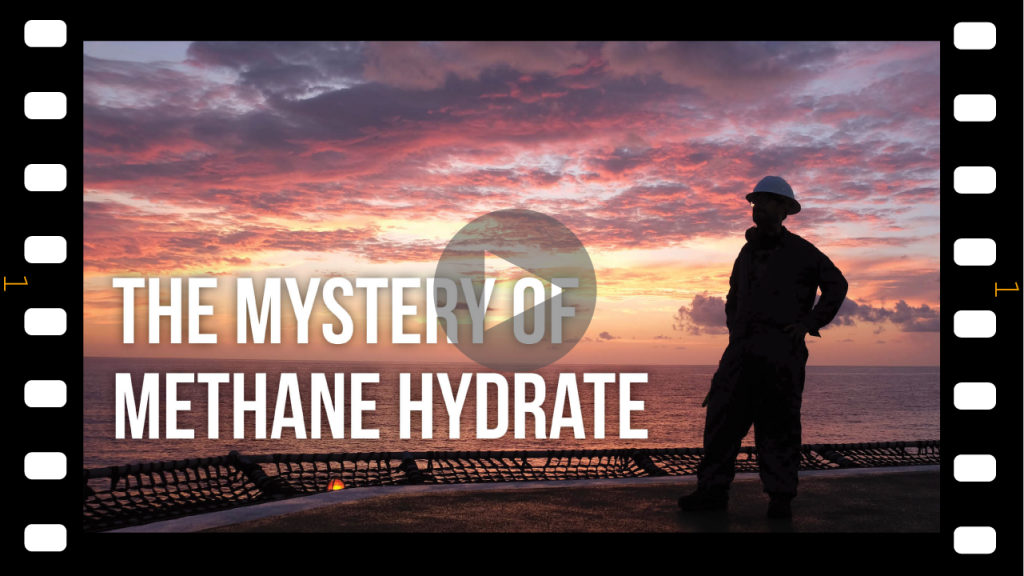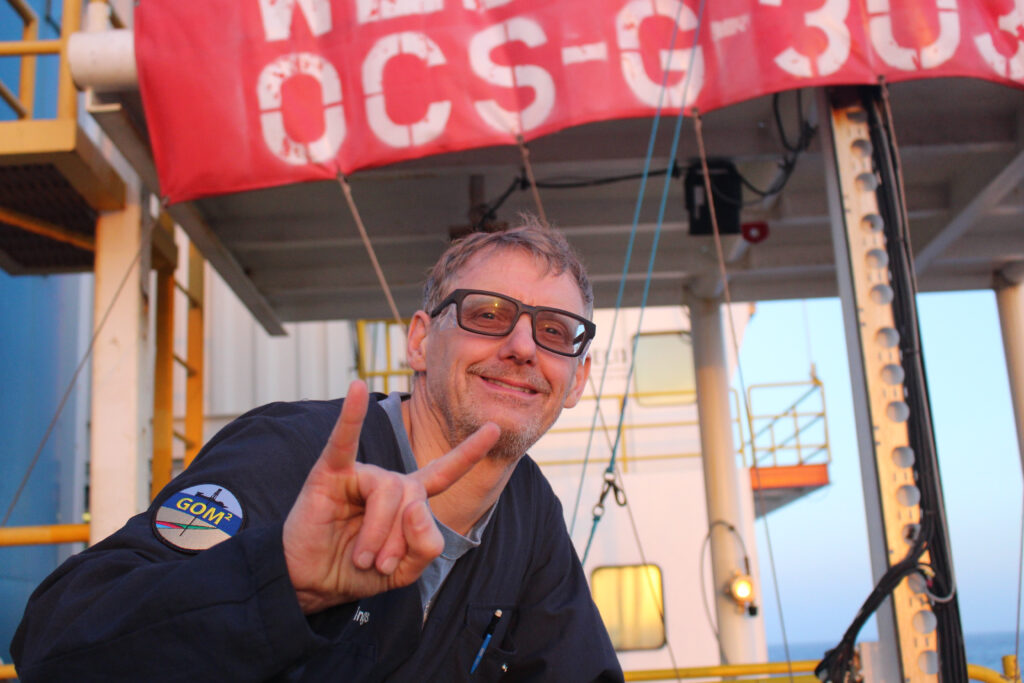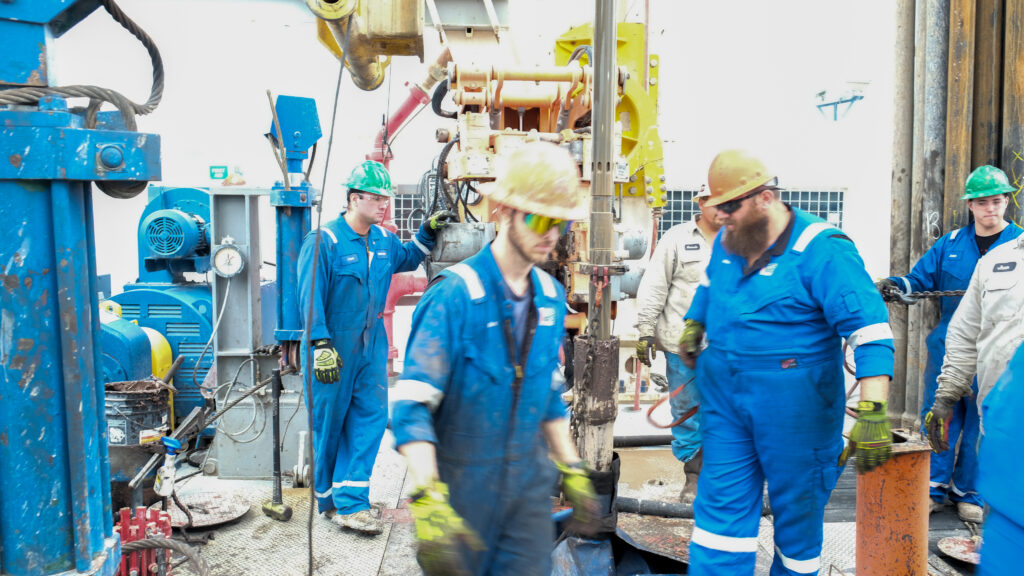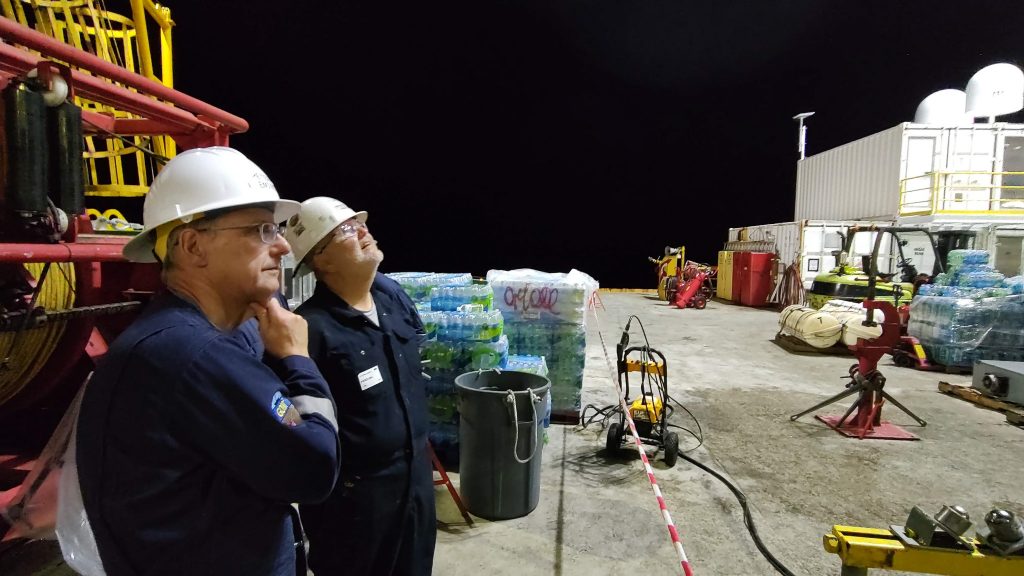
Editors Note: Scientists from the UT Jackson School of Geosciences and partner universities are on a mission funded by the Department of Energy to sample and study methane hydrate, a difficult to reach and poorly understood substance with potentially wide-ranging effects on the planet’s environment, climate and energy resources. Led by Jackson School Professor Peter Flemings, the scientific team includes researchers from the U.S. Geological Survey, Ohio State University, the University of Washington, Oregon State University, the University of New Hampshire, the Colorado School of Mines and Tufts University. Jackson School Science Writer Monica Kortsha and videographer Drew Ott joined the team to document the work and tell the story.
By Monica Kortsha
Last night, Peter Flemings, the mission’s lead scientist and a professor at The University of Texas at Austin Jackson School of Geosciences, called the science team together. He wanted to make sure everyone was up to speed on the science and the mission progress – which had picked up momentum during the past day.
The drilling team had hit a good coring stride, Flemings said. Core samples from the methane hydrate reservoir system had been coming up every few hours.
As if on cue, a call came about 15 minutes into the meeting announcing a fresh core on deck. The members of the night-shift science team left the meeting to get to sampling the new arrival.
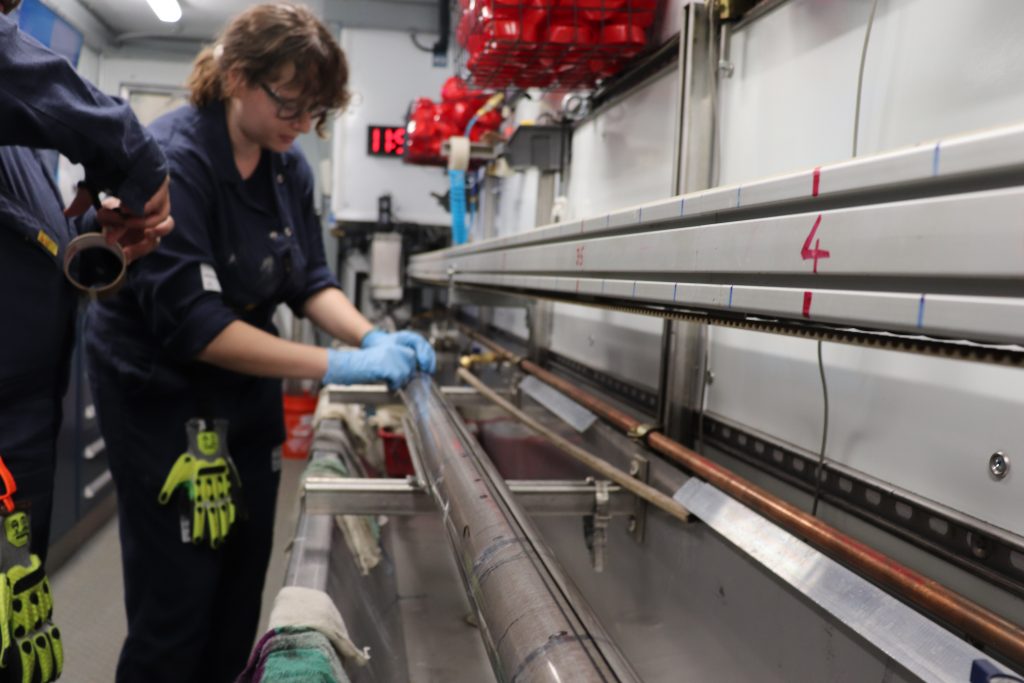
When I stopped by after the meeting to see how things were going, I found the team in great spirits sampling away, using syringes to pull gas, and cutting sections to send off to other labs.
That was yesterday. Today, things have drastically changed. The mission went from picking up speed to being stopped in its tracks because of a busted fan motor in the top drive – a machine that’s essential for coring offshore.
To make matters worse, COVID was detected aboard the vessel. This activated a suite of preventative measures for both science team and crew, including quarantining any positive cases.
“As you gain momentum, the extremes seem to go both ways,” said Camille Sullivan, a sedimentologist and graduate student at the University of New Hampshire, remarking on how quickly the situation turned. “We had a really good flow going, and then the rig doesn’t work.”
Time will tell whether COVID is just a few cases or a larger outbreak. But it will take anywhere from 36-48 hours for the fan to be repaired.
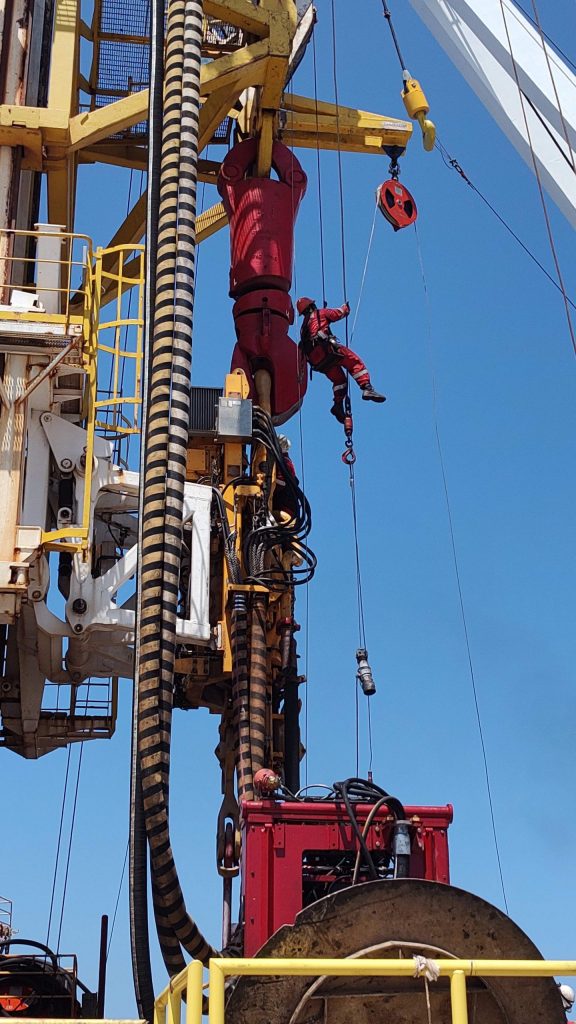
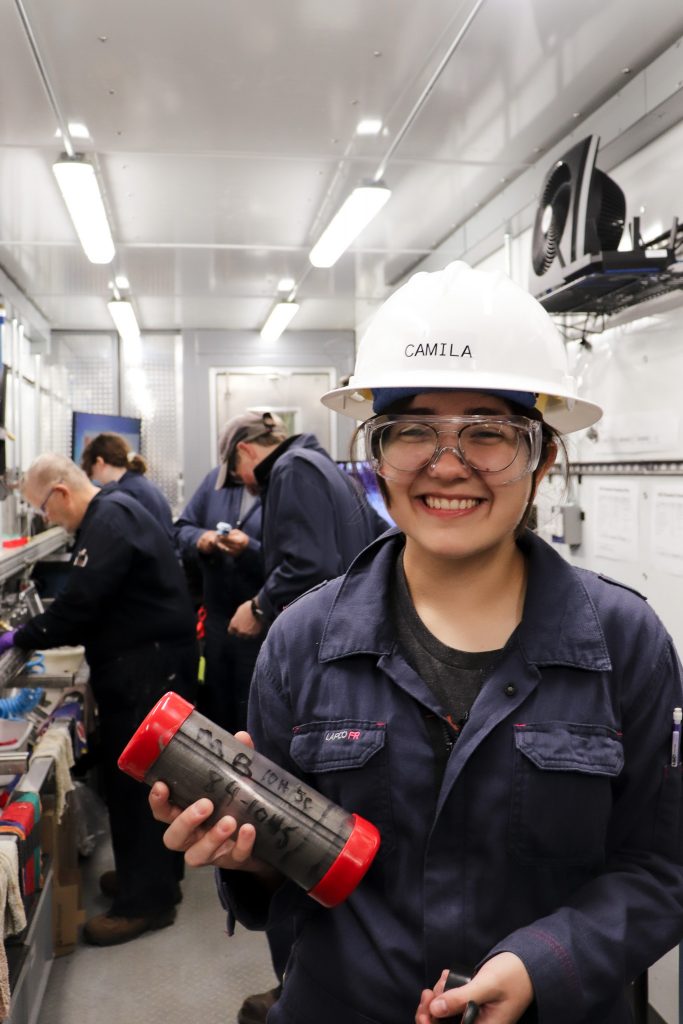
According to Flemings, as of now, there are no changes being made to the coring plan. Depending on how the next few days go, the science team will have to start making decisions about what samples to prioritize capturing during the mission’s remaining weeks at sea.
The coring mission may be motivated by science. But when it comes down to getting those cores from the subsurface to the drilling deck, it’s a matter of heavy machinery and human hands at the ready.
When these things aren’t available, all you can do is wait.
Camila Van Der Maal, an undergraduate student at the Jackson School of Geosciences – and the only undergrad in the science party – is using this downtime working on a project proposal that can hopefully land her a spot on an upcoming scientific drilling mission happening next year.
This mission to core methane hydrates has offered a lot of firsts for Van Der Maal. Her first time visiting a new state in the U.S. outside of Texas, her first time on a helicopter, her first time offshore.
She said that she has loved the adventure of it all, the excitement of seeing cores that no one has ever seen before, and the experience of life and science at sea.
“I can’t wait to get back offshore,” she said. “Even though there aren’t new cores now, people are still teaching me things and there’s a lot to learn from everyone here.”
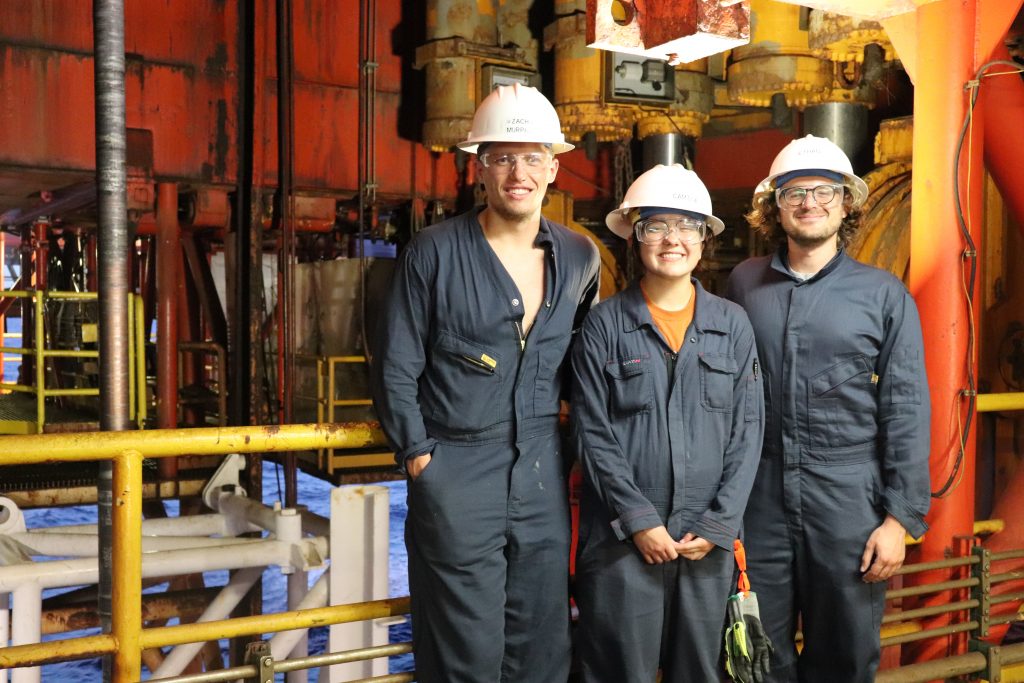
The Mystery of Methane Hydrate – a documentary
Monica Kortsha’s Expedition Blog
Methane Hydrate: The Mission Continues
Pressure Coring Technology One Step Closer to Hydrates Test

